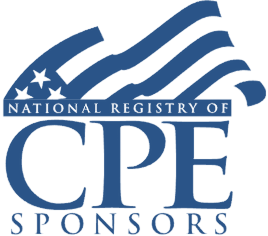- videocam On-Demand Webinar
- signal_cellular_alt Intermediate
- card_travel Tax Preparer
- schedule 110 minutes
Section 469 Passive Activity Rules: Loss Limitations, Ordering Rules, and Utilizing Losses
Substantiating Material Participation, Calculating Carryforwards, Reporting Dispositions, Qualifying as a Real Estate Professional
Welcome! Save 30% on all CLE, CPE, and Professional Skills webinars, plus 15% off any annual pass with code HOLIDAY25
About the Course
Introduction
This course will provide tax advisers with a thorough and practical guide to navigating Section 469, the passive activity loss (PAL) limitation rules, calculating PAL amounts, and PAL carryforwards. The panel will discuss the separate calculations required and describe the interrelationship between the at risk rules and the PAL regulations, with a particular focus on real estate activities.
Description
Since their adoption, the PAL limitations rules have challenged and frustrated tax advisers. Taxpayers generally may not use losses from activities in which they are passive investors to offset ordinary income earned in an active trade or business. Whether a taxpayer's involvement in an activity rises to the level of active participation is frequently subject to IRS examination and challenge.
Treatment of losses generated from the rental of real property is particularly complicated. The regulations specifically include rental real estate within the definition of passive activities. However, numerous provisions provide both allowances for threshold loss amounts and differing standards regarding the level of involvement and activity required of taxpayers to utilize losses from rental activities.
Tax advisers must navigate the lengthy and challenging guidance on PALs to avoid expensive mistakes. When the taxpayer has significant real estate investments, incorrectly sorting out which losses can offset ordinary and business income can have costly tax consequences. The IRS continues to focus on passive income and losses since the imposition of the 3.8 percent net investment income tax.
Listen as our expert panel provides a thorough and practical guide to understanding the PAL rules, calculating what income and loss must be classified as passive, calculating PAL carryforwards, reporting PAL limitations on Form 8582, and identifying planning opportunities and elections to minimize the impact of PAL limitations.
Presented By

Mr. Barnett’s practice is highly concentrated in the areas of taxation, trusts, estates, corporate and partnership law and charitable planning. His experience includes surrogate’s court practice, tax dispute resolution in both federal and state jurisdictions, and tax court representation. Mr. Barnett frequently assists clients in structuring financial transactions and charitable gifts. His articles and lectures encompass a wide variety of topics, including business succession, estate planning, generation-skipping, stock options, effective strategies for removing tax liens, proper utilization of the marital deduction and utilization of partnership elections.

Mr. Castelli's areas of focus are tax planning
-
BARBRI is a NASBA CPE sponsor and this 110-minute webinar is accredited for 2.0 CPE credits.
-
BARBRI is an IRS-approved continuing education provider offering certified courses for Enrolled Agents (EA) and Tax Return Preparers (RTRP).
Date + Time
- event
Wednesday, December 11, 2024
- schedule
1:00 p.m. ET./10:00 a.m. PT
- Passive activity rules of IRC Section 469 and regulations
- Material participation rules
- Real estate professional standards
- 199A considerations
- Form 8582
- Disposition of passive activity investments
- Impact of Section 461(l) excess business losses
The panel will discuss these and other important topics:
- Activities vs. material participation and why it matters
- Active vs. passive distinctions in real estate activities
- Material participation test
- Real estate active participation test
- Substantiating material participation under the tests
Learning Objectives
After completing this course, you will be able to:
- Understand the material participation rules
- Differentiate active from passive distinctions in real estate activities
- Recognize how the material participation tests are applied
- Discern what is required to have real estate treated as an active activity
- Identify the passive activity rules of IRC 469
- Determine how to substantiate material participation under the tests
- Field of Study: Taxes
- Level of Knowledge: Intermediate
- Advance Preparation: None
- Teaching Method: Seminar/Lecture
- Delivery Method: Group-Internet (via computer)
- Attendance Monitoring Method: Attendance is monitored electronically via a participant's PIN and through a series of attendance verification prompts displayed throughout the program
- Prerequisite: Three years+ business or public firm experience preparing complex tax forms and schedules, supervising other preparers or accountants. Specific knowledge and understanding of pass-through taxation, including taxation of partnerships, S corporations and sole proprietorships, qualified business income, net operating losses and loss limitations; familiarity with net operating loss carry-backs, carry-forwards and carried interests.

BARBRI, Inc. is registered with the National Association of State Boards of Accountancy (NASBA) as a sponsor of continuing professional education on the National Registry of CPE Sponsors. State boards of Accountancy have final authority on the acceptance of individual courses for CPE Credits. Complaints regarding registered sponsons may be submitted to NASBA through its website: www.nasbaregistry.org.

BARBRI is an IRS-approved continuing education provider offering certified courses for Enrolled Agents (EA) and Tax Return Preparers (RTRP).

BARBRI CE webinars-powered by Barbri-are backed by our 100% unconditional money-back guarantee: If you are not satisfied with any of our products, simply let us know and get a full refund. Contact us at 1-800-926-7926 .
Unlimited access to premium CLE courses:
- Annual access
- Available live and on-demand
- Best for attorneys and legal professionals
Unlimited access to premium CPE courses.:
- Annual access
- Available live and on-demand
- Best for CPAs and tax professionals
Unlimited access to premium CLE, CPE, Professional Skills and Practice-Ready courses.:
- Annual access
- Available live and on-demand
- Best for legal, accounting, and tax professionals
Unlimited access to Professional Skills and Practice-Ready courses:
- Annual access
- Available on-demand
- Best for new attorneys
Related Courses

Partnership Terminations: Sale or Abandonment of an Interest, Retirement or Death of Partner, and Closing the Entity
Wednesday, February 18, 2026
1:00 p.m. ET./10:00 a.m. PT

UK-Based Retirement Accounts for U.S. Taxpayers: Mastering Reporting, Maximizing Planning Opportunities
Tuesday, January 27, 2026
1:00 p.m. ET./10:00 a.m. PT

Tax Research Techniques: Internet Tools, AI Caveats, Methodology, Documentation and Communication of Results
Wednesday, January 21, 2026
1:00 p.m. ET./10:00 a.m. PT

The Impact of OBBBA on Trusts and Estates: New Planning Opportunities
Monday, January 26, 2026
1:00 p.m. ET./10:00 a.m. PT
Recommended Resources

How CPE Can Bridge the Gap Between What You Know and What You Need to Know
- Career Advancement


